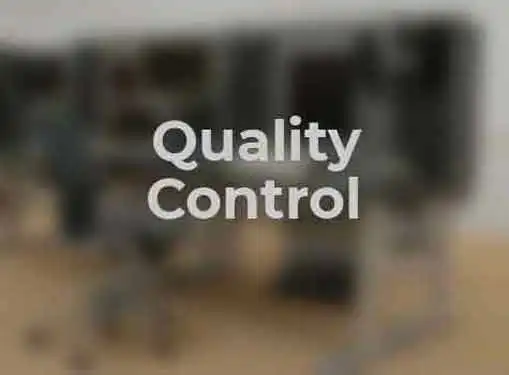Quality Control
Quality Control Management
Written by Andrew Goldman for Gaebler Ventures
Quality control does not get as much attention as it should with small businesses. The level of quality embedded in your system greatly determines how you are perceived in the market and how well your profit margins are doing. By embracing quality control as a primary issue, small businesses can gain significant improvements in these areas.
To those unfamiliar with total quality management, quality control may seem like a secondary factor in growing a successful business.

Companies, especially small businesses, often pour their resources into sales, marketing and distribution. Quality control tends to take a backseat.
Many large corporations have embraced quality control as a primary issue and have reaped the benefits. In truth, small businesses need top-notch quality control as much, if not more, than big businesses. The tangible and intangible costs associated with poor quality leave little room for argument.
Minor changes in the way a small business operates can vastly affect its product, its customers, and its mission. Adopting some simple principles of quality management can help a business gain significant competitive advantages over their competition.
Is every product or service you provide guaranteed to reach the customer without any flaws or defects?
If you cannot guarantee every product or service you provide is without defect, then you have a lot of room to improve.
The first concept of quality control is the difference between internal and external customers.
Internal customers involve the different subdivisions of your company that pass on product or information. For example, if your sales team prints sales invoices and delivers the information to production, production is an internal customer of sales. Thus, the sales department should be challenged to flawlessly deliver each sales invoice to the production team. Mistakes may snowball down the supply chain, resulting in reworking costs, scrap costs, and potentially a loss of customers.
External customers involve those who receive the products or services outside your company. Any defect or flaw that reaches your external customer is the most expensive, and potentially most devastating, of all quality problems. No defective product or service should ever reach the customer, and this needs to be a major part of your company's culture. After all, would you be willing to go back to a restaurant that served you a cold or under-cooked meal? An unsatisfied customer will very likely share his experience with others, thus leading to future lost business. A small business cannot grow or succeed if they are not delivering their best to their customers each and every time.
Identifying and Fixing Problems
In each step of your product or service production, you need to seek and destroy each and every problem that leads to defects and errors.
This begins with ensuring that internal customers receive the same level of quality that external customers receive. As problems arise, employees must come together in a discussion. Although this may result in temporary line stoppages, the costs of these stoppages are insignificant when compared to the costs of future errors. If a defect occurs, chances are it will repeat itself.
Andrew Goldman is an Isenberg School of Management MBA student at the University of Massachusetts Amherst. He has extensive experience working with small businesses on a consulting basis.
Share this article
Additional Resources for Entrepreneurs



Conversation Board
Interested in quality control management today? What's on your mind? Use the form below to give us your comments, tips or suggestions.